Another favorite of mine, potato and onion miso soup (じゃがいもと玉ねぎのみそ汁) is a popular type of miso soup served all across Japan. Made with only 5 ingredients and packed with umami and savory notes, this comforting soup can be served as part of a meal or as a healthy late night snack.
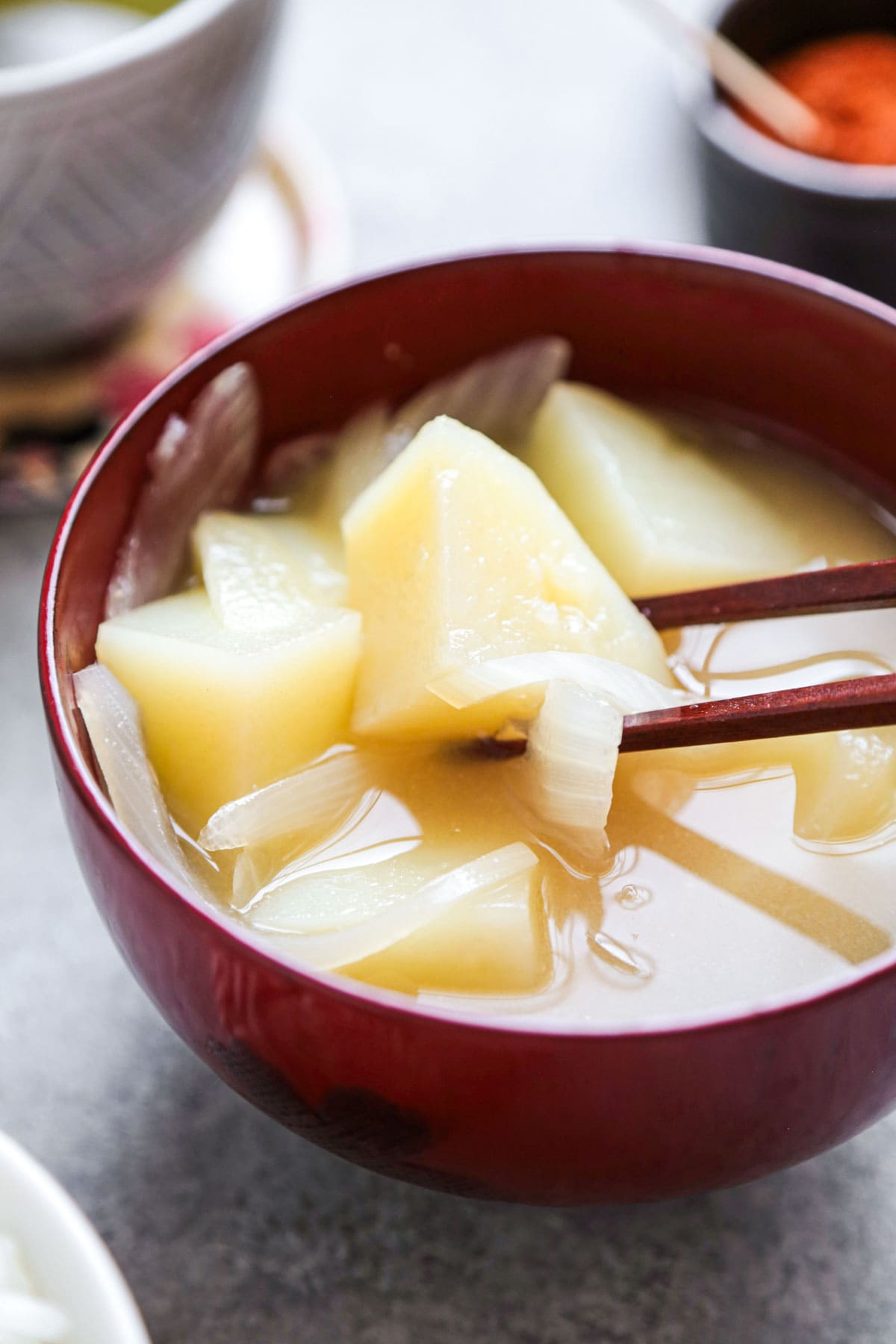
Table of contents
Why I Love This Recipe
One of the first dishes I have whenever I visit my mother in southern Japan is her amazing miso soup. Made with lots of onions to sweeten the soup, it’s one of those dishes I can’t seem to get enough of. When the weather is a bit cooler, my mother likes to add potatoes to make the dish more hearty. For many years I have watched her thinly slice onions, peel and slice potatoes, and delicately flavor the soup with dashi and miso paste.
When I am back home in California I can easily recreate her recipe because it’s so easy to make. Both Ben and I love potatoes and love the fact that it’s healthy and filling too. The flavors are mild but very present. The type of miso paste used is the secret behind the success of this dish, which I will be sharing with you. This miso soup recipe is kid friendly and takes about 25 minutes to make.
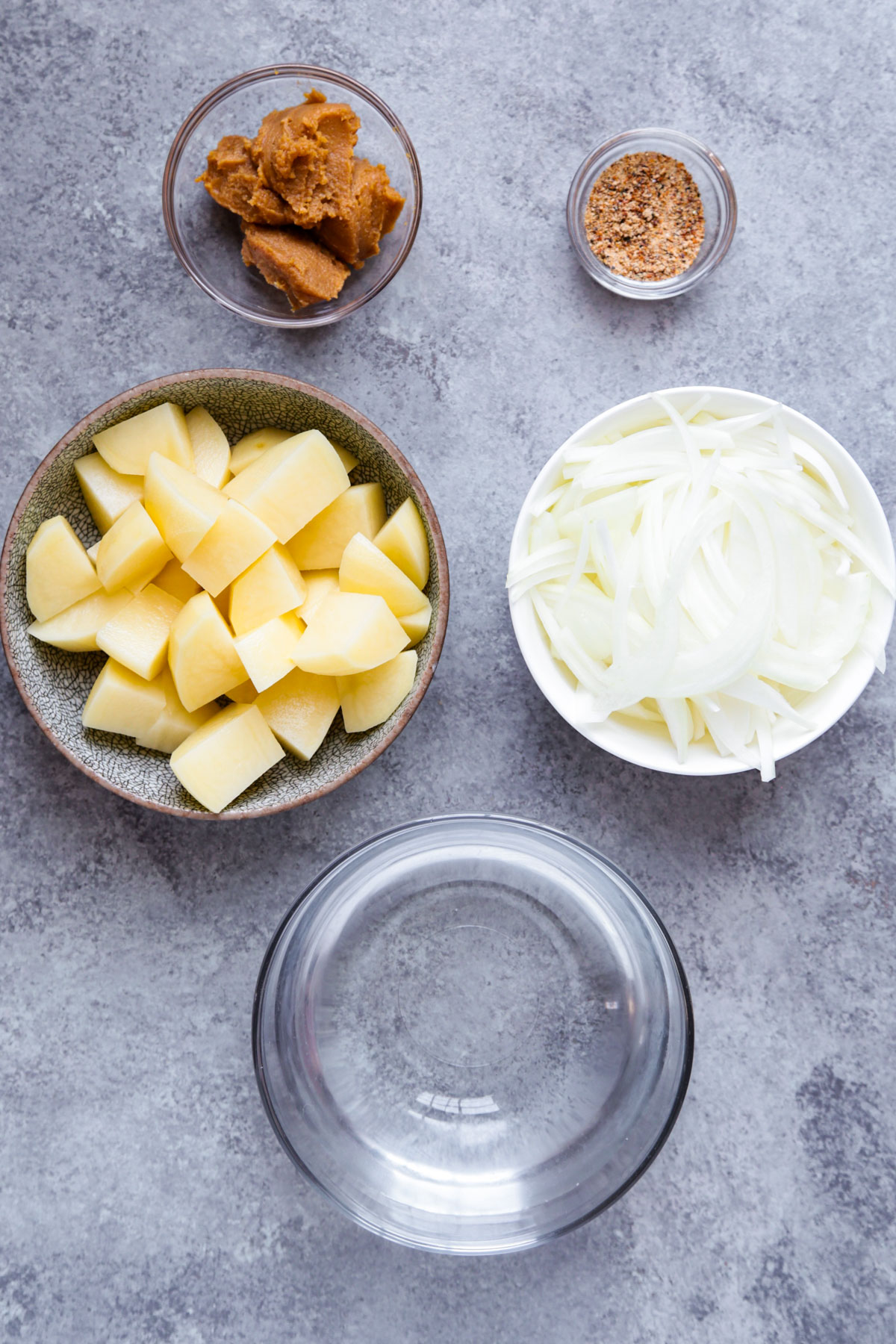
Ingredients
Scroll down to the recipe card for the full recipe.
- Potatoes: You can use any type of potatoes for this miso soup. I have even seen my mother use baby potatoes with the skin on, and the result was delicious! For this post I am using russet potatoes that I have peeled.
- Onion: A yellow onion is the best type of onion to use for this recipe because of its natural sweetness and low level of bitterness.
- Water: Plain water – whether it’s tap, bottled, or filtered is up to you – which will be flavored by a mix of dashi powder and miso paste.
- Dashi powder: To make miso soup, dashi made with a mix of kombu and bonito flakes is the preferred type because it’s mild and rich in umami. Anchovy dashi (iriko dashi), which is also rich in umami, can also be used but has a fishier taste.
- Miso paste: While I usually give the option of using white or awase miso paste when making miso soup, I strongly recommend sticking to white miso paste for this recipe. That’s because the onions add sweetness to the broth and the potatoes give it an almost creamy element. I have tried making it with awase miso paste but didn’t like it as much.
Variations
- Make it spicy: Add 2 teaspoons of tobanjan chili paste (or more) or add one or two sliced dried red chilies. The dried red chilies will also add smokiness!
- Make it vegan: Use kombu dashi powder instead of regular dashi powder. Also, make sure that the miso paste you are using doesn’t contain any dashi, as some do.
- Add nuttiness: Add ground sesame seeds before serving the soup to add an element of nuttiness.
- Make it more filling: Add a protein such as tofu (like this tofu and wakame miso soup) or cooked chicken, or mushrooms such a sliced shiitake mushrooms, shimeji mushrooms (white beech), or maitake mushrooms (hen-of-the-wood).
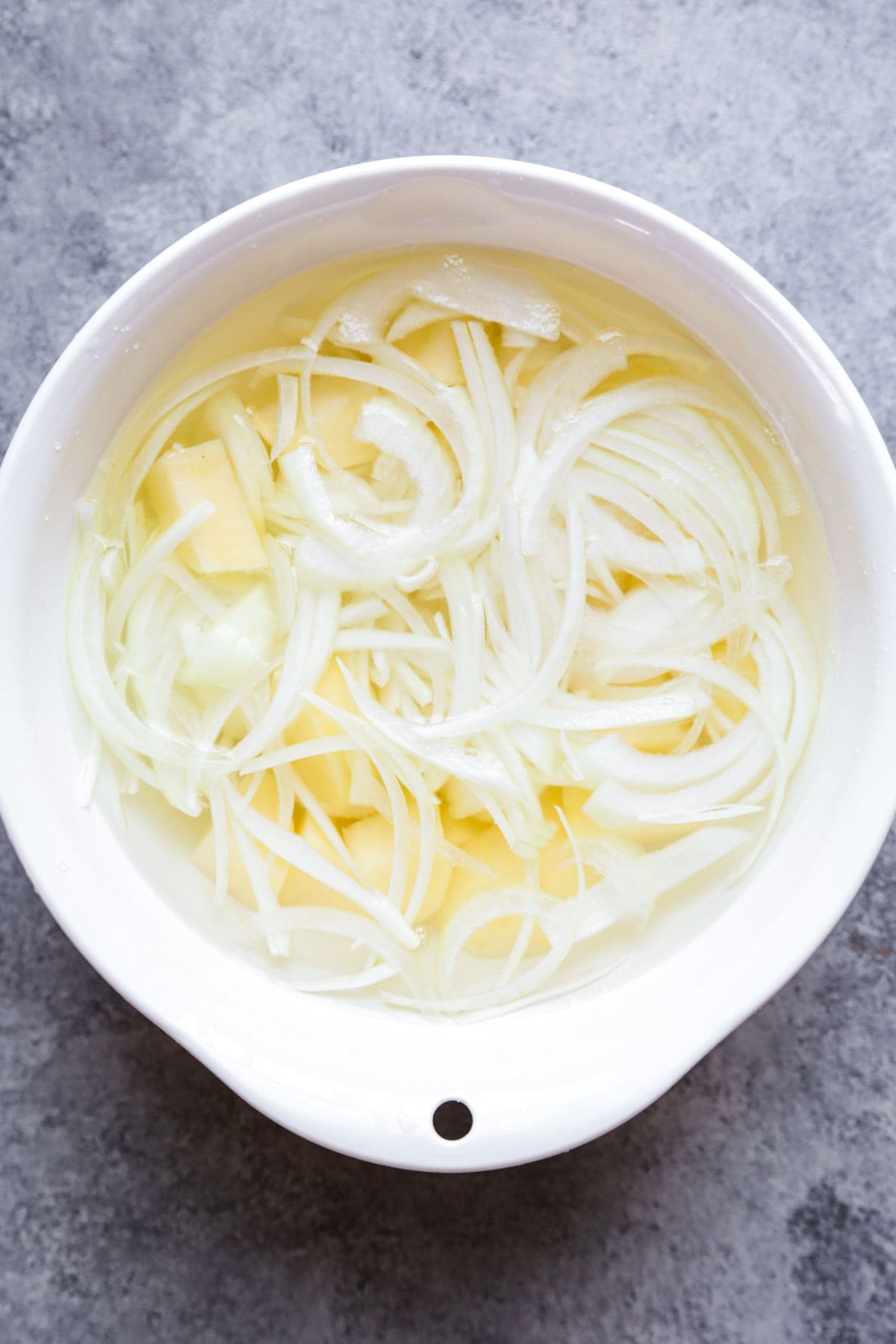
How To Make It
- Soak the onion to remove some of the bitterness, and the potatoes to remove some of the starch.
- Make the stock by mixing the water and dashi powder. Bring it to a boil.
- Add the potatoes and onions and gently boil until the potatoes are cooked.
- Stir the miso paste into the soup by using a strainer and whisking it with chopsticks.
- Turn the heat off and enjoy!
Expert Tip
- Buy good quality miso paste: The simpler the better when it comes to the ingredients list. Look for miso paste that contain less than 10 ingredients, with basic ingredients such as rice, koji grains, soybeans, and salt. The more ingredients the miso paste contains, the less pure and fresh it will taste.
- Add the miso paste last to preserve the nutrients and delicate aroma: Boiling miso paste for a long isn’t recommended as the heat will destroy the delicate aroma and most of the nutritious elements associated with this soup, such as the probiotics. That’s why miso paste is only added at the very end of the cooking process.
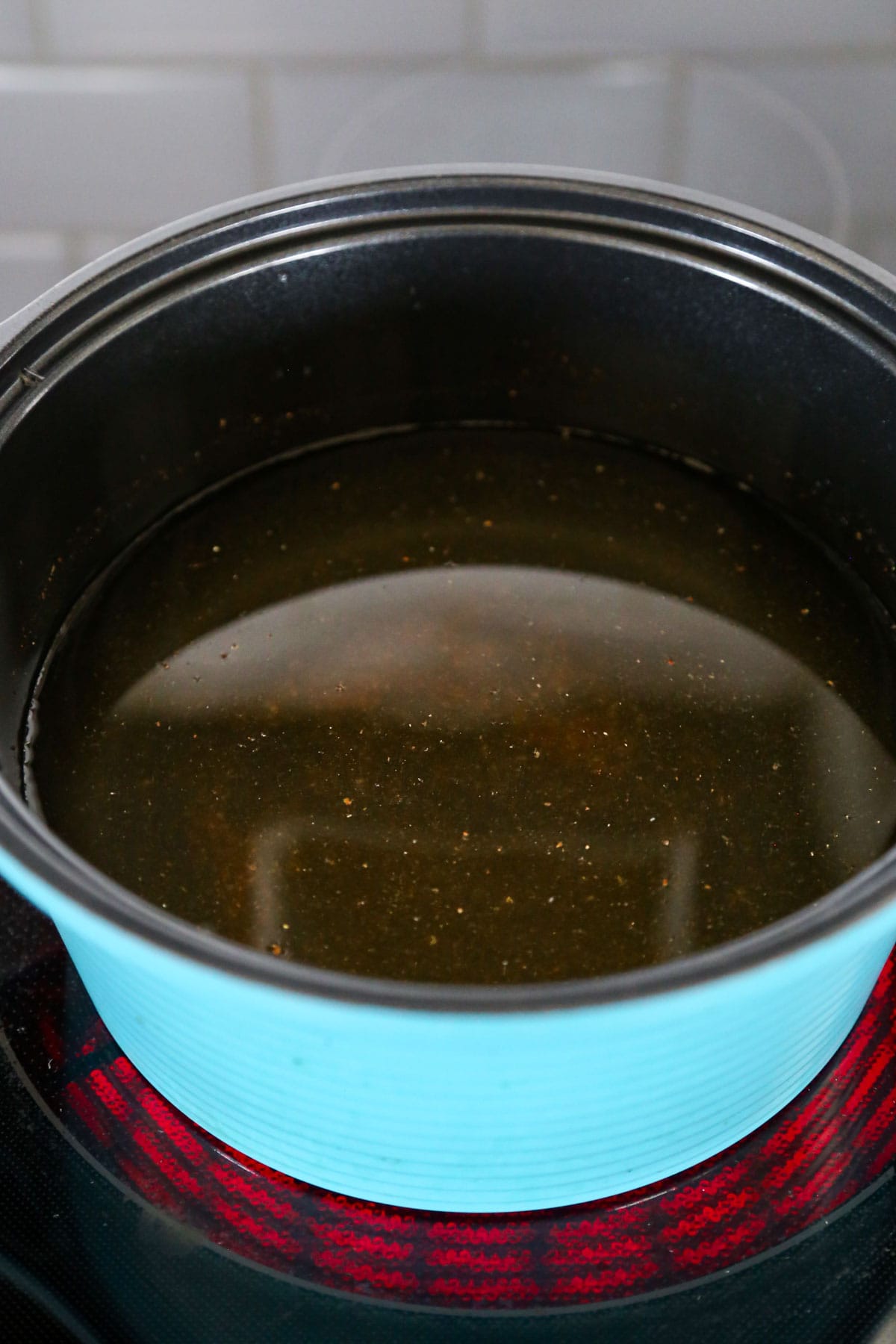
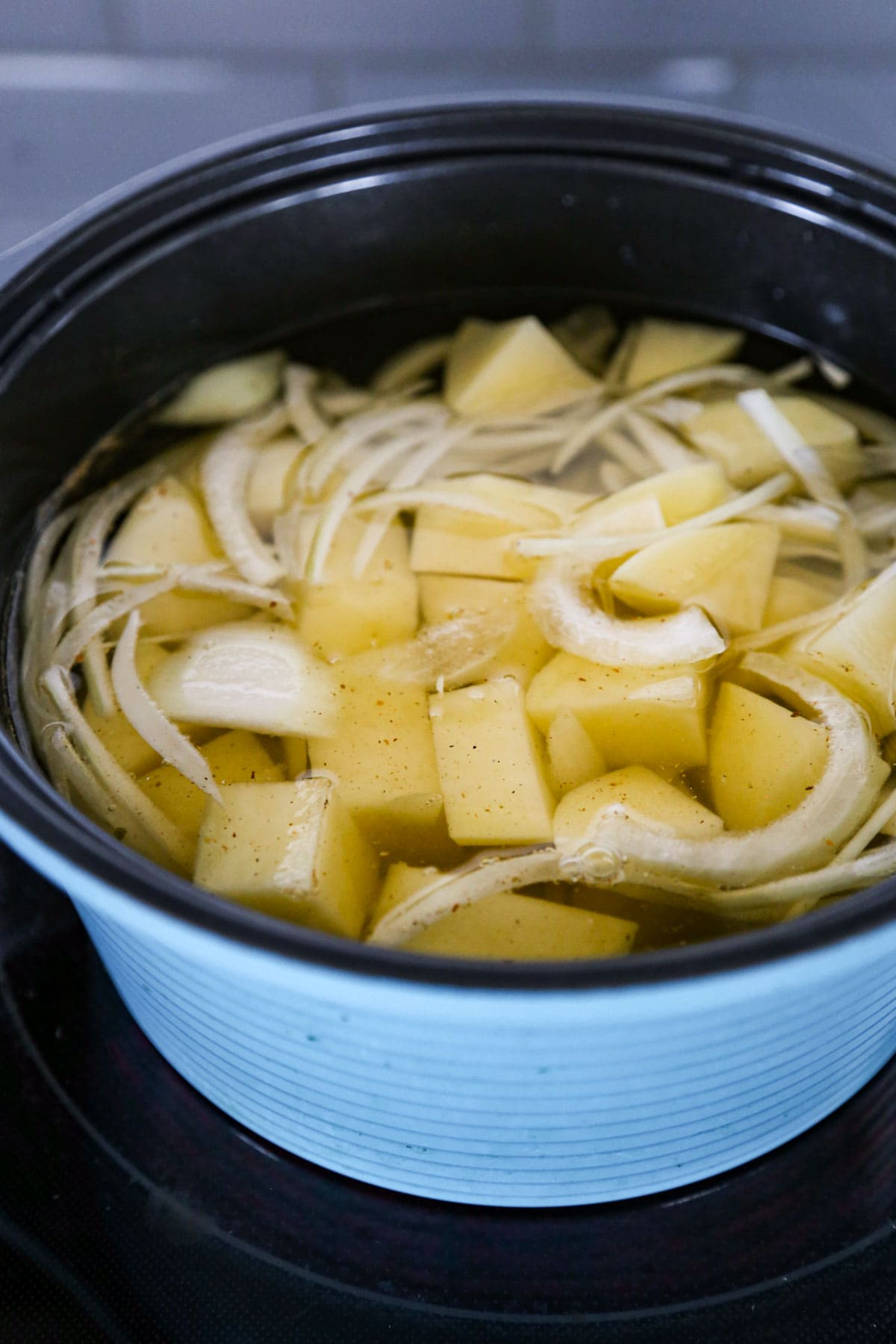
Storage And Reheating
Fridge: Let the soup cool down to room temperature and transfer it to a storage container. Refrigerate for up to 3 days.
Freezer: Yes, you can freeze this soup but I personally wouldn’t recommend it because the texture of the potatoes will deteriorate. Miso soup, which is such a simple dish, should only be enjoyed at its best – at least, that’s my personal opinion! If you would still like to freeze it, wait until the soup has cooled down to room temperature. Transfer it to airtight storage containers or freezer bags – I recommend individual servings to make it easier for later – and freeze for up to 1 month.
Reheating: Reheating miso soup should be done slowly in order to preserve as many nutrients as possible. You can microwave the soup on medium heat for 1 minute at a time, until it’s warm but not piping hot. Or, you can eat it cold like I do all the time! Cold miso soup is just as delicious!

What To Serve This Miso Soup With
What makes this miso soup different than the others is the fact that it’s hearty, almost like serving yourself a tiny bowl of stew. Therefore, I recommend serving it with dishes that pair well with potatoes, to give the overall meal you are about to serve, a comforting feel.
Some of my favorite dishes that I like to serve with this soup are: Baked chicken katsu, omurice, chicken egg foo young, Japanese fried rice (yakimeshi), moo goo gai pan, and eggplant and kabocha miso gratin.
And serve it with sides such as: Japanese coleslaw, broccoli tots, spicy tuna rolls, edamame with soy and sesame sauce, and nasu dengaku.
Frequently Asked Questions
Yes, it’s perfectly fine. I wouldn’t suggest overdoing it though – you don’t want the potatoes to disintegrate before hitting you mouth! But I do like my potatoes to be quite tender for this recipe.
Yes, you absolutely can! Obviously, don’t add water if you are using dashi broth. Simply use 4 cups of dashi broth. If you are using a dashi packet, do not open the packet. Add it to the water and remove it when the cooking process is done.
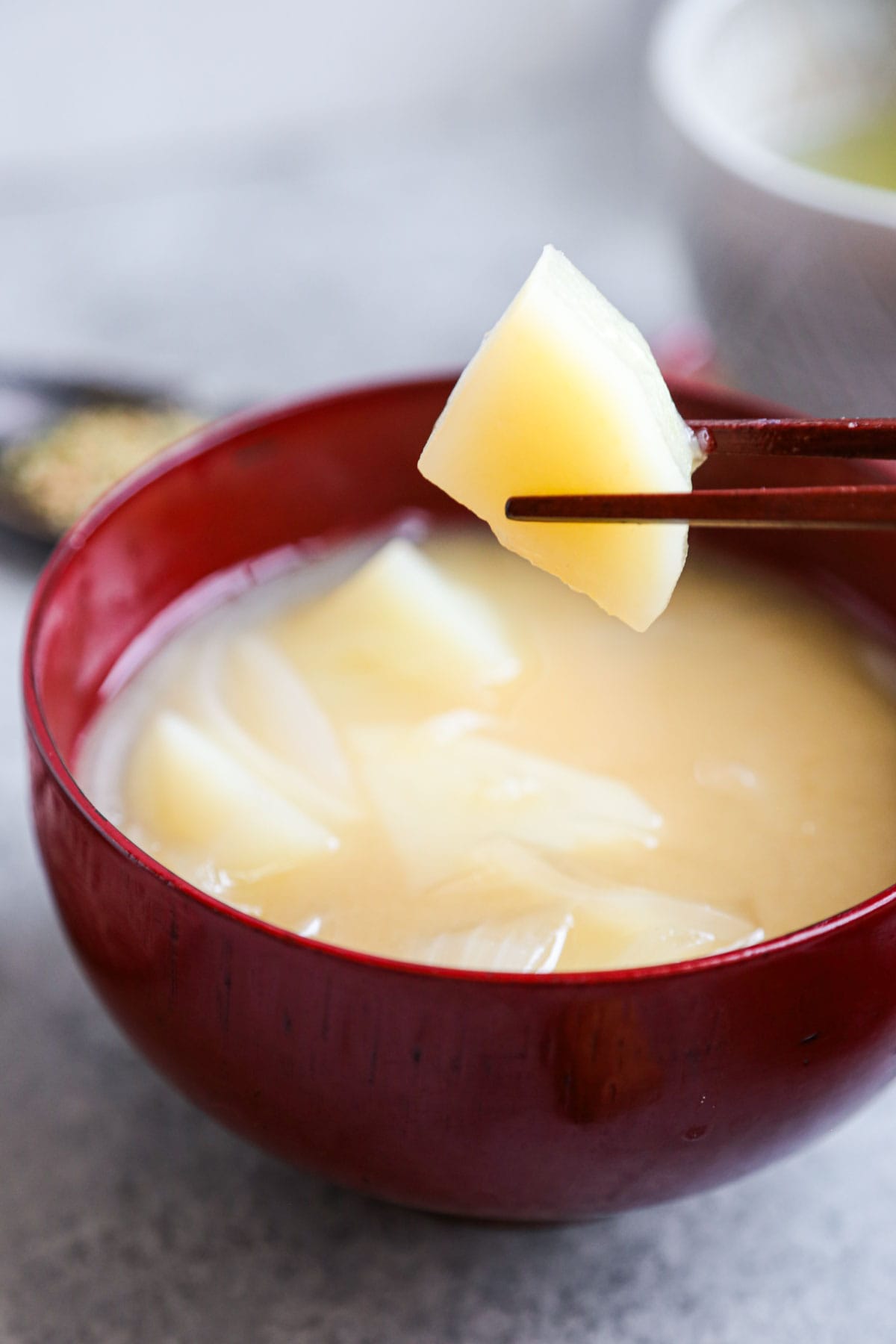
Did you like this recipe? Are there changes you made that you would like to share? Share your tips and recommendations in the comments section below!
Print
Potato And Onion Miso Soup
- Prep Time: 10 minutes
- Cook Time: 15 minutes
- Total Time: 25 minutes
- Yield: 4 servings 1x
- Category: Soup
- Method: Boiling
- Cuisine: Japanese
- Diet: Vegetarian
Description
Made with only 5 ingredients and packed with umami and savory notes, this comforting potato and onion miso soup can be served as part of a meal or as a healthy late night snack.
Ingredients
- 2 medium potatoes, slice into 1-inch thick pieces
- 1 small onion, thinly sliced into half moons
- 4 cups water
- 1 tablespoon dashi powder
- 3 to 4 tablespoons white miso paste or awase miso paste
Instructions
- Soak the vegetables: Place the sliced potatoes and onions in a bowl and fill it with cold water. Let the vegetables sit for 10 minutes and drain. This is to remove some of the starch from the potatoes and some of the bitterness from the onion.
- Make the soup: Add the water and dashi powder to a pot and turn the heat to high.
- Cook the potatoes and onions: When the water is boiling, add the potatoes and onions and cook on medium high (the water should be boiling gently) for 15 minutes, or until the sliced potatoes and onions are tender. Turn the heat off.
- Add the miso paste: Put the miso paste in a small strainer and lower it into the pot, until the liquid covers the miso paste. Using chopsticks, stir the miso paste until it has fully dissolved.
- Serve with seasoning: Divide the miso soup among 4 bowls and serve with some ichimi on the side.
Nutrition
- Serving Size: 1 serving
- Calories: 154
- Sugar: 2.2g
- Sodium: 762mg
- Fat: 0.4g
- Saturated Fat: 0g
- Unsaturated Fat: 0.6g
- Trans Fat: 0g
- Carbohydrates: 23.9g
- Fiber: 3.8g
- Protein: 8.9g
- Cholesterol: 0mg















This was so useful my husband thought this was amazing!